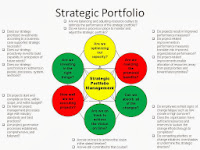How to Measure Organizational Learning

One of my tasks at work recently was to measure organizational learning. "How would I know if my organization is a learning organization," I wondered?
Training activity seemed to be the most common answer. The logic is easy to refute when simply stated: If we offer a lot of training opportunities and a lot of people attend, then we must be a learning organization.
The evidence of individual learning is a change in behavior, or at least a change in the behavioral options available. But how does that translate to the organizational level?
With just a little bit of background reading (thank you Peter Senge), I came up with a tentative checklist. It still needs some refinement, but here it is:
1. Does the organization have a shared vision; does everyone know what it is and how their actions support it?
2. Is personal mastery expected; are learning and growth required of individuals in the organization?
3. Does the organization utilized team-based approaches to learn
